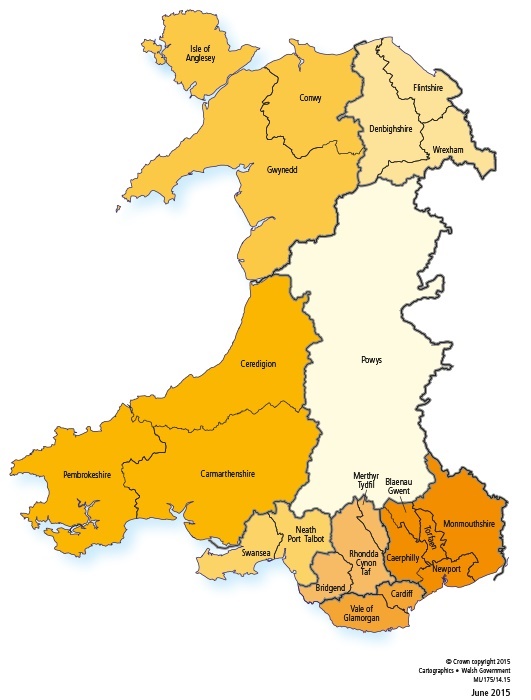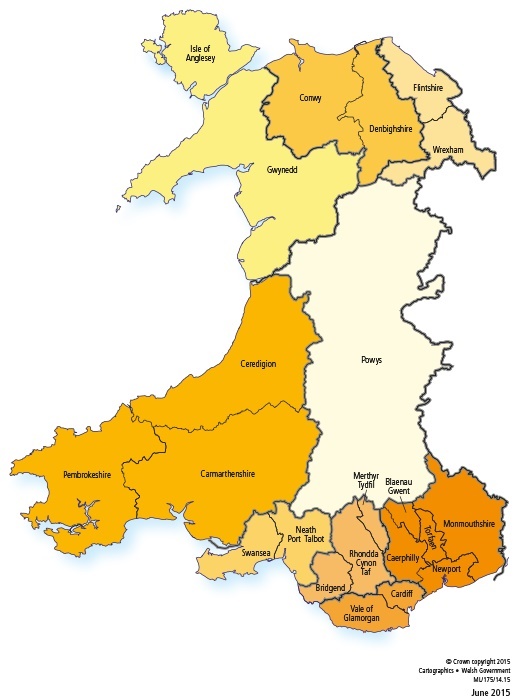24.11.15
Welsh council shake-up could save £650m, but threatens 2,000 jobs
Under the Draft Local Government Bill published today (24 November), the current 22 councils in Wales will be merged into eight or nine in order to find £650m of savings over a decade.
Public services minister, Leighton Andrews, said the upfront costs of the government’s shake-up would cost between £97m and £246m, but that the merger will pay for itself within two to three years.
Andrews said: “Our vision for local government is for activist councils, engaged in delivering modern, accessible, high-quality public services with their local communities. We want to see councils which are vibrant, strong, flexible, open and transparent – councils with vision, great leadership and passion, working effectively with the public service workforce and their communities to improve services, improve lives and improve places.
“There is a real opportunity here for local government to make significant savings for taxpayers and if councils work together, plan well and involve their staff, there is the opportunity for savings even greater than the £650m we have identified.
“This means more money for frontline public services, more money to invest in communities and more money to support local economic prosperity.”
 Eight-council model
Eight-council model
The public services minister had already floated the idea of reducing the number of local authorities in Wales in June, when he set out his vision for how local government should look with two different proposals.
But the radical local government reform, broadly similar to arrangements pre-1996 with bigger county councils, could result in 1,900 less jobs when administrative services are trimmed.
The number of councillors would also drop from 1,250 to between 700 and 900.
It would remain at the councils’ discretion whether to make staff redundant, offer early retirement or hand them new jobs, but early retirement schemes for senior managers are expected to cost an extra £6.6m to £12.4m.
The Welsh Local Government Association (WLGA) said councils and stakeholders still needed time to digest the 650-page document, but that the impact on jobs on top of the 8,000 already lost since 2010 was already clear.
A spokesperson for the association said: “The WLGA hopes that this legislation will deliver the Welsh government’s stated intention to free up local authorities from a stifling bureaucracy and regulation. Local authorities have long called for flexibility to respond to the huge cuts and pressures and anything that adds to the growing trend of centralisation in Wales would not be welcomed in this context.”
The spokesperson added that the WLGA would debate the Draft Bill fully, judging it against the principles of localism outlined in its manifesto.
But they assured that it will still be some time before they have clarity on the “final direction of travel” given next year’s elections. However, it already pointed out that one of the sticking points in the Bill was its failure to “adequately address” the issue of council tax harmonisation.
“Whatever the outcome of the assembly election, reorganisation will not happen until 2020 at the earliest. Any predicted savings may therefore be almost a decade away and will not remedy the enormous financial challenges we face over the next five years,” the spokesperson continued.
“The chancellor’s Spending Review announced tomorrow (25 November) will no doubt have significant implications for Wales’ public services.”
The Welsh ministers’ plan is being consulted on from today until 15 February, with a Bill due to be presented in autumn.
Merger details
Under the proposals, Cardiff would merge with the Vale of Glamorgan. Another merger between Caerphilly, Torfaen, Blaenau Gwent, Newport and Monmouthshire would result in the country’s biggest council yet, with a combined population of almost 600,000.
The historical county of Dyfed would also be brought back by re-merging Carmarthenshire, Pembrokeshire and Ceredigion. West Glamorgan would also return by joining Swansea once more with Neath Port Talbot.
Bridgend would join Rhondda Cynon Taf and Merthyr Tydfil.
In the eight-council model, Anglesey, Gwynedd and Conwy would merge as well as Denbighshire, Wrexham and Flintshire.
The other model would see Conwy and Denbighshire merging instead.
 Nine-council model
Nine-council model